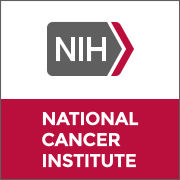2
项与 Anti-CEA TCR PBL(National Cancer Institute) 相关的临床试验Phase I/II Study of Metastatic Cancer That Expresses Carcinoembryonic Antigen (CEA) Using Lymphodepleting Conditioning Followed by Infusion of Anti-CEA TCR-Gene Engineered Lymphocytes
Background:
* Carcinoembryonic antigen (CEA) is a protein present mostly in cancer cells.
* An experimental procedure developed for treating patients with cancer uses blood cells found in their tumors or bloodstream. These cells are genetically modified using the anti-CEA gene and a type of virus. The modified cells (anti-CEA cells) are grown in the laboratory and then given back to the patient to try to decrease the size of the tumors. This is called gene therapy.
Objectives:
* To determine whether advanced cancers that that express the CEA antigen can be treated effectively with lymphocytes (white blood cells) that have been genetically engineered to contain an anti-CEA protein.
Eligibility:
* Patients 18 years of age and older with metastatic cancer (cancer that has spread beyond the original site) and for whom standard treatments are not effective.
* Patients' tumors express the CEA antigen.
* Patients have the human leukocyte (HLA-A*0201) antigen.
Design:
* Workup with scans, x-rays and other tests.
* Leukapheresis to obtain cells for preparing the anti-CEA cells for later infusion.
* 1 week of chemotherapy to prepare the immune system for receiving the anti-CEA cells.
* Infusion of anti-CEA cells, followed by interleukin-2 (IL-2) treatment. The cells are given as an infusion through a vein. IL-2 is given as a 15-minute infusion through a vein every 8 hours for a maximum of 15 doses.
* 1-2 weeks of recovery from the effects of chemotherapy and IL-2.
* Periodic follow-up clinic visits after hospital discharge for physical examination, review of treatment side effects, laboratory tests and scans every 1 to 6 months.
Phase II Study of Metastatic Melanoma Using a Chemoradiation Lymphodepleting Conditioning Regimen Followed by Infusion of Anti-Mart-1 and Anti-gp100 TCR-Gene Engineered Lymphocytes and Peptide Vaccines
Background:
* Melanoma antigen recognized by T-cells (MART-1) and gp100 are two genes found in melanoma cells. An experimental procedure developed for treating patients with advanced melanoma uses these genes and a type of virus to make special cells called anti-MART-1 and anti-gp100 cells, which are designed to destroy the patient's tumor. The cells are created in the laboratory using the patient's own tumor cells or blood cells.
* The procedure also uses one of two vaccines-the anti-MART-1 peptide or the anti-gp100 peptide-to stimulate cells in the immune system that may increase the effectiveness of the anti-MART-1 and anti-gp100 cells. Both vaccines are made from a virus that is modified to carry a copy of the MART-1 gene or gp100 gene. The virus cannot cause disease in humans.
Objectives:
- To evaluate the safety and effectiveness of anti-MART-1 and anti-gp100 cells and peptide vaccines for treating patients with advanced melanoma.
Eligibility:
- Patients 18 years of age with metastatic melanoma for whom standard treatments, including aldesleukin (IL-2) therapy to boost immune response, have not been effective.
Design:
* Participants have an initial evaluation with complete medical history, as well as scans, x-rays, and other tests as directed by researchers. Most of the treatments for this study will be given on an inpatient basis.
* Before the treatment begins, participants will undergo leukapheresis (removal of selected blood cells) to obtain cells for preparing the anti-MART-1 and anti-gp100 cells, and for later stem cell transplantation.
* Preinfusion treatment: 5 days of chemotherapy and 2 days of total-body irradiation to prepare the immune system for receiving the anti-MART-1 and anti-gp100 cells.
* Infusion of cells, followed by IL-2 treatment to improve immune response. IL-2 is given as a 15-minute infusion through a vein every 8 hours for a maximum of 15 doses (over 5 days).
* After the cell infusion, participants will be divided into two groups and will receive either the gp100 peptide or MART-1 vaccine, given once a week for 3 weeks. Participants will also have stem cell transplantation (from previously collected stem cells) to promote cell survival.
* Periodic follow-up clinic visits after hospital discharge for physical examination, review of treatment side effects, laboratory tests and scans every 1 to 6 months.
100 项与 Anti-CEA TCR PBL(National Cancer Institute) 相关的临床结果
100 项与 Anti-CEA TCR PBL(National Cancer Institute) 相关的转化医学
100 项与 Anti-CEA TCR PBL(National Cancer Institute) 相关的专利(医药)
100 项与 Anti-CEA TCR PBL(National Cancer Institute) 相关的药物交易






